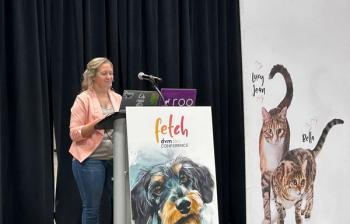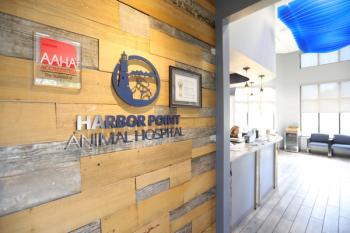
Caring about patients: Sadie's story
In the last Diagnote, we discussed caring about patients in the context of drug shortages.
In the last Diagnote, we discussed caring about patients in the context of drug shortages. In the final part of this series, we provide some suggestions to minimize the consequences of drug shortages in Table 1. Another aspect of caring about patient is illustrated by looking at Sadie's story.
Table 1: How to deal with drug shortages
Sadie's story begins
Sadie, a 110-lb spayed female blood hound, entered the Osborne home after being rescued from a pound when she was about 5 years old. She was a magnificent-looking dog. However, she had severe leg-hold trap scars a few centimeters proximal to her left hock joint. She also was missing a huge section of auricular cartilage shaped like an adult grey wolf's mouth. In light of the evidence of severe trauma and pain in her past, I promised Sadie that, to the best of my ability, she would not be subjected to such severe pain again.
Carl A. Osborne, DVM, PhD, Dipl. ACVIM and Eugene E. Nwaokorie, DVM, MS
Sadie loved everybody. She was indifferent to the presence of the wild and domesticated animals commonly found in urban-suburban cities. She was afraid of loud noises such as firecrackers, thunder, backfires from automobiles and gunshots. If she was at home when a loud clap of thunder occurred, she would immediately head for the closet of our second-story bedroom, apparently because she felt safe there.
A tragic ending
On Saturday night, Oct. 14, 2011, eight years after she first came into our family, Sadie suddenly developed gastric dilatation. At first she became restless. She headed up the stairs leading to the bedroom closet and started to whimper with each breath. Because my disability includes Parkinson's disease and unrelated bilateral bone-to-bone osteoarthritis affecting both knee joints, I could not examine her, nor could I lift her out of the closet. My 91-lb. wife, Lynn, felt equally helpless.
Our home was only seven suburban miles from the University of Minnesota Veterinary Medical Center (VMC), so I called the VMC hotline. I was informed that an international conference of emergency care and trauma veterinarians was meeting in Minneapolis, so doctors were not immediately available. The emergency phone receptionist was calm and reassuring. All she could do was suggest that we contact local emergency services for help. I asked if someone could help me move her from our bedroom closet. But nothing could be done unless I brought Sadie to the VMC.
After two and a half hours of listening to automated phone answering messages at emergency hospitals, in desperation I called 911. The local police arrived a short time later. At first there was only one officer. Because of Sadie's size, he called for backup. About two minutes later, a second squad car arrived. Both officers were polite and efficient.
These two police officers gently placed Sadie in the back seat of our car. Within minutes we were on our way to VMC. At that time, it was apparent that Sadie had stopped breathing. Without any form of medication to ease her pain, Sadie expired her last breath in our second-story bedroom closet. She died in excruciating pain. Tears fill my eyes as I pen these words. Because I did not plan for the unexpected, I could not keep my promise to Sadie.
Epilogue
As I reflect on Sadie's life, I have more questions than answers. What should we have done differently? Here's my advice anticipating the unexpected:
1. Keep a crash box containing drugs, syringes and needles, parenteral fluids and administration sets, a stethoscope, stomach tubes, sterile aqueous lubricant, sterile gloves, examination gloves, surgical and bandage scissors, hemostats, scalpels and blades, cotton, splints, splint padding, disinfectants, bandages and euthanasia solution.
2. Have emergency hospital phone numbers, phones, flashlights, maps and poison control center phone numbers readily at hand.
3. Protect yourself with a muzzle, leads, neck collars, gloves, face masks and a drug formulary.
Dr. Osborne, a diplomate of the American College of Veterinary Internal Medicine, is professor of medicine in the Department of Small Animal Clinical Sciences, College of Veterinary Medicine, University of Minnesota.
Dr. Nwaokorie recently completed his MS and is pursuing a PhD at the University of Minnesota.
Newsletter
From exam room tips to practice management insights, get trusted veterinary news delivered straight to your inbox—subscribe to dvm360.






